
views
Planning for Your Model

Understand cells. You must understand the primary organelles (cell components, essentially the organs of the cell), their relation to one another, and the differences between plant and animal cells if you are going to construct an accurate 3D model. You must know the different organelles if you are going to model them. Vitally, you must understand their shape. The colors usually given to the different cell components in textbooks are used for contrast and usually bear no resemblance to reality, so in that instance you can be creative. But you must develop the correct shapes in order to model them. It is also important to know how the various cell structures relate to one another. For example, the endoplasmic reticulum (ER) is always located close to the nucleus because it processes the proteins that are used in DNA replication. Consider where you will place your organelle as you are creating your model. Know the differences between plant and animal cells. Most importantly, plant cells have an exterior cell wall made of cellulose, contain very large vacuoles (a membrane-bound collection of water and enzymes), and possess chloroplasts (the portions of the plant cell that convert sunlight into usable energy). Centrosomes are only present in animal cells. Similarly, animal cells always have cilia, while plant cells often don't. Animal cells are typically round and irregular, while plant cells are rectangular and fixed in shape.

Develop a concept for your model. Will your model be a transparent representation, with the cell components suspended in a see-through material? Will it instead be a cutaway model, giving the appearance of a cell that has been cut in half but containing organelles that provide a three-dimensional appearance? Instructions on how to construct two alternative styles of model appear later in this article, but will be summarized here: The first option is a fully three-dimensional representation of a cell, with all of the organelles suspended in clear gelatin. The second option involves using craft materials to construct a cut-away model that shows a cell with a section removed to facilitate viewing.
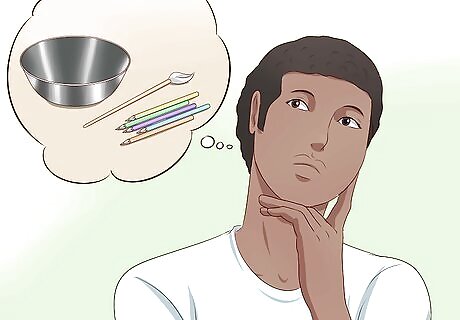
Think about the materials you would use. The materials will obviously vary depending on the type of model you have decided to construct. It is easiest to use items that already have the general shape of the object you are modeling--say, something roughly circular for a cell nucleus. Of course, many of the organelles are shaped so strangely that it may be impossible to find something that already has the same appearance. In this case you should think of materials that are flexible and can be fitted to whatever appearance you need.

Be creative. Will your 3D model be edible? What types of colors will you use for each organelle? Never lose sight of the vital elements that must be represented in this project, but the form of your model does not always have to limit its style and creativity.
Using Gelatin
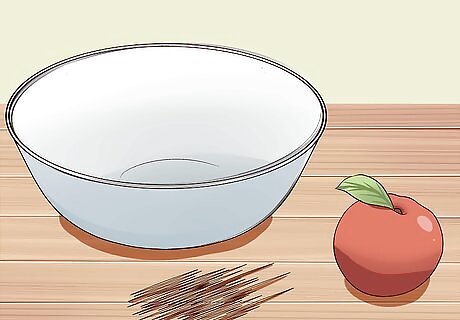
Get the materials to make your cell parts. You'll be making the parts of your cell out of various food and kitchen items. What you use is up to you but here are a few ideas: Clear gelatin will work as the cytoplasm, which is present in both animal and plant cells. If you are simply going for authenticity, non-flavored gelatin would work perfectly well. If you have decided to go edible, choose a variety that won't be so darkly colored as to obscure the model organelles you place inside. For the nucleus, nucleolus and nuclear membrane: Purchase a pitted fruit, such as a plum or peach. The pit is the nucleolus, the fruit is the nucleus, and the skin is the nuclear membrane. (If you are not expected to deliver this level of complexity, a simple round food item will do). You'll need this for either a plant or animal cell. Centrosomes, which are only present in animal cells, are supposed to be spiky, try putting bits of toothpick through a gumdrop or other small gummy item. Model the Golgi apparatus, which is present in both plant and animal cells, using cut-out pieces of cardboard, wafers, crackers, sliced bananas or, perhaps best yet, a fruit roll-up stacked like an accordion. For the Lysosomes in either type of cell, use small, round candies or chocolate chips. Mitochondrion, which are also present in both animal and plant cells, are somewhat oblong, so try using lima beans or perhaps certain types of un-shelled nuts. For ribosomes, you'll want something small. Try sprinkles, peppercorns, or plain pepper. These are present in both plant and animal cells. The rough endoplasmic reticulum, which is present in both animal and plant cells, looks much like the Golgi apparatus, in that it is a structure of flat, folded sections clumped together; though unlike the Golgi apparatus it has a rough-looking surface. You could use similar materials for it, but try to find a way to stick something rough or textured to it (perhaps sprinkles) in order to make the two distinct. The smooth endoplasmic reticulum looks more like a tangled and irregularly sized series of connected tubes. For this, you'll want something smooth and bendy. Use cooked spaghetti, gummy worms, or stretched-out taffy. When creating your vacuoles, you'll choose different shapes for animal versus plant cells. For an animal cell, use a few moderately sized gumballs--ideally uniform in color, but with some transparent quality (there are essentially just sacks of water and enzymes, after all). Vacuoles in plant cells are much, much larger. If you really want to get tricky here, you could make a separate gelatin (perhaps made with the concentrated formula for extra rigidity) earlier and attempt to insert it into the model plant cell. Microtubules can be modeled using uncooked pieces of spaghetti or, depending on the scale of your project, straws. For chloroplasts (plant cell only), use peas, green jelly beans, or green beans cut in half. Keep them green.
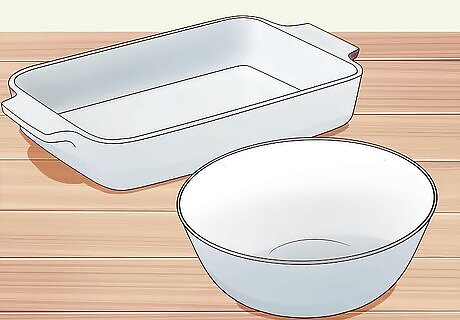
Get a gelatin mold. You'll need a mold to make your cell in but you'll need to decide what type of cell you're making first. Animal and plant cells have different shapes and will require different molds. If you're making a plant cell, the first thing you'll need is a rectangular baking dish, preferably made out of porcelain. The dish itself will be your cell wall and membrane, in your model. If you're making an animal cell, you'll want a round or oblong baking dish, like a casserole dish. This dish can be your cell membrane, or you can later remove the cell model from the dish and cover it in saran wrap cut to shape and size and call that the membrane.

Make the gelatin. Cook the gelatin according to the instructions on the box--it usually begins by boiling water on the stovetop, and then mixing the gelatin in. Carefully pour the hot liquid into the casserole dish or baking pan. Put in the fridge and let it set for about an hour, or until it's almost hardened. Do not wait until the gelatin has completely settled. You want the gelatin to reform or solidify around the areas where you have inserted the model organelles. If you can't find clear gelatin, buy the lightest color possible, like yellow or orange. You can also make gelatin from scratch.
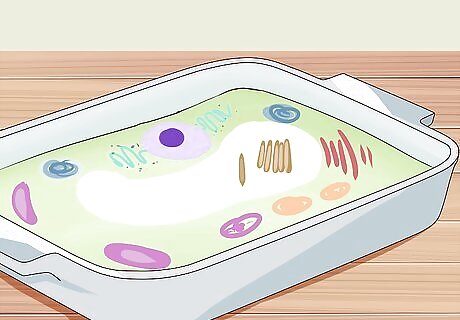
Add your cell parts. Start putting your cell parts into the gelatin. Here's how you might want to arrange the pieces: Put the nucleus near the middle (unless you are modeling a plant cell). Place the centrosome near the nucleus. This is only present in animal cells. Put the smooth endoplasmic reticulum near the nucleus. This is present in both animal and plant cells. Place the Golgi body, which is present in both animal and plant cells, near the nucleus (though farther away than the endoplasmic reticulum). Add the rough endoplasmic reticulum onto the other side of the smooth endoplasmic reticulum (away from the nucleus). This is present in both plant and animal cells. Arrange everything else wherever you have room. Try not to crowd too much into one space. In a real cell, there are a few structures that float all around the cytoplasm. These can be mixed in almost randomly.
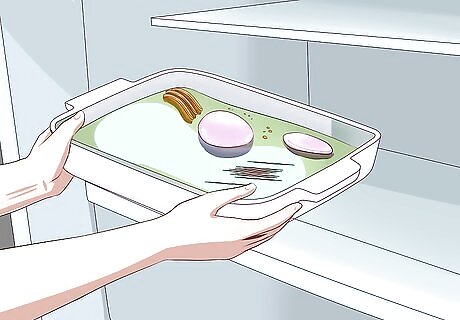
Put the model back into the refrigerator. Allow the gelatin to settle for another hour or two until it is completely solidified.

Make a table or key that defines each part. After you've added your cell pieces, write up a list of what part of a cell each item corresponds to (e.g., "Gelatin = Cytoplasm," "Licorice = Rough ER"). You'll probably need to be able to tell people about the parts of your cell later on.
Using Craft Items
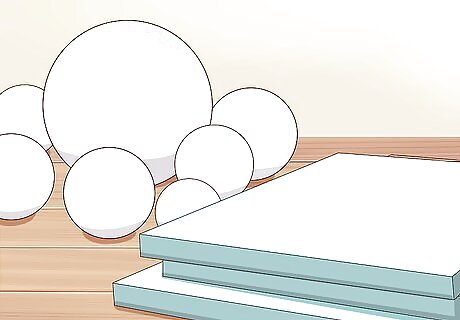
Obtain the materials. Here are a few options: You can use a styrofoam cell base. Craft or art stores and will have styrofoam balls (if making an animal cell) roughly the size of a basketball or a styrofoam rectangular cube (if making a plant cell). Cardstock can be used to form a number of cell structures, such as the Golgi apparatus or rough endoplasmic reticulum. Straws or small hoses can be used to form tube-like structures. The microtubules could be constructed out of stirring straws, while flexible straws or tubes can be used to model the smooth endoplasmic reticulum. Use beads of various sizes and shapes as other cell structures, such as mitochondria or chloroplasts. Try to keep them on an appropriate scale compared to the other structures in the model cell. Modeling clay can be used to create any structure that is difficult to replicate using preexisting materials. Paint can be used to fill in the cytoplasm and differentiate between it and the exterior of the cell. You can also paint any clay structures you have created.
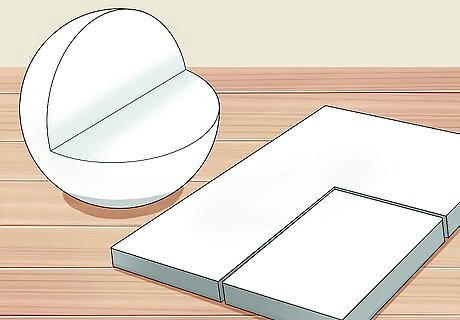
Cut out a 1/4 section of the styrofoam base. Measure the base and make dots at the points that equal half the length of a side. Draw lines showing where to cut. Then use an exacto knife or something similar to cut and remove a 1/4 section. For the plant cell, do this by drawing the center line on any two adjoining sides and continue those lines all the way around until they circle back. If doing this for the animal cell, draw the lines like you were making the equator and the meridians on a globe.
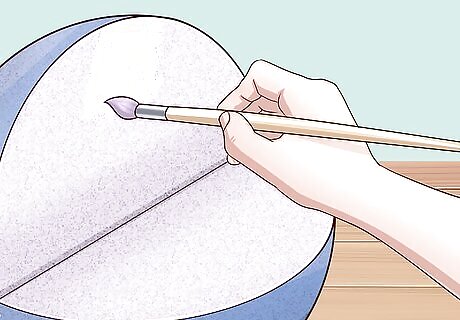
Paint it. Paint the inside of the 1/4 section in order to help your cell parts stand out. You can also paint the outside in a different color to contrast it with the cytoplasm.

Make the cell parts. Create them from the craft items listed above. The trickiest of these will be the parts that you must model out of clay. Keep these structures as simple as possible while remaining true to the basic structure you are modeling. It may be best to only make the simplest of structures out of clay and leave more complex parts--say, the smooth endoplasmic reticulum--to be replicated using tubes or some other item.

Add the cell parts. Add the parts to your cell base (the styrofoam). This can be done by using hot glue, regular glue, toothpicks, pins, staples, or a number of other methods. In some cases you may also need to literally dig or carve out space in the styrofoam to fit in the parts. The Golgi apparatus and rough endoplasmic reticulum can be shaped out of cardstock using your hands. In this case, make slices into the styrofoam and slide pieces of cardstock in to form the folded shapes of these structures.
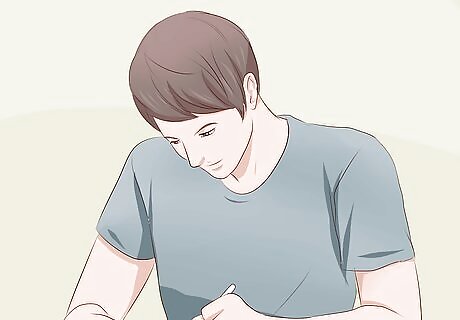
Make a table or key that defines each part. After you've added your cell pieces, write up a list of what part of a cell each item corresponds to. You'll probably need to be able to tell people about the parts of your cell later on.



















Comments
0 comment